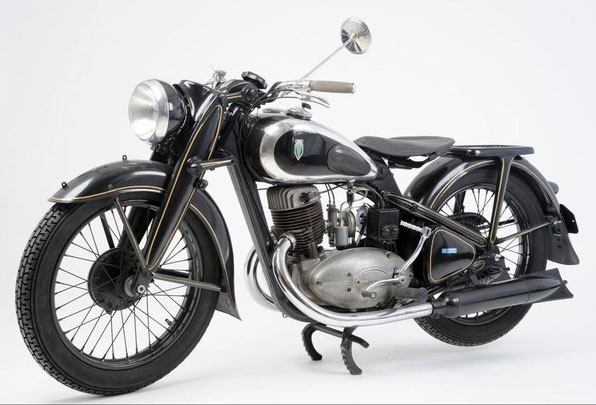DKW Motorcycles Service Manual PDF
|
Title |
File Size |
Download Links |
|
DKW 1935 Manual de Reparatie.pdf |
1.6Mb |
|
|
DKW 1943 Manual de reparatie.pdf |
1.3Mb |
|
|
DKW Hobby Owner's Manual.pdf |
4.3Mb |
|
|
DKW NZ250+350 Instruction Manual.pdf |
3.9Mb |
|
|
DKW RT 200 Service Manual.pdf |
9.2Mb |
|
|
DKW SB Models Betriebsanleitung.pdf |
2.4Mb |
|
|
DKW SB200 Betriebsanleitung (Service Manual)1935.pdf |
1.6Mb |
|
|
DKW Vergasereinstelldaten Carb.pdf |
1.3Mb |
DKW - Dampf Kraft Wagen - a brand of German cars and motorcycles. Registered in 1916, ceased to exist in 1966.
In 1904, Danish engineer Jörgen Skafte Rasmussen, together with his partner Karl Ernst, founded the Ernst and Rasmussen company in Chemnitz to sell all kinds of machinery and equipment. In 1906, Rasmussen acquired a plant in the city of Chopau and transferred production there. The sales office remained in Chemnitz. The company was focused on the sale of a wide range of accessories for steam engines. Since 1909, Rasmussen & Ernst, Zschopau-Chemnitz, Maschinen-und Armaturenfabrik, Apparatebau Anstalt (Rasmussen and Ernst, Chopau-Chemnitz, machinery and equipment of the factory, equipment of the institute) were opened. In 1913, a legal separation occurred between Rasmussen und Ernst, and J.P. Rasmussen changed the company name to Zschopauer Maschinenfabrik JS Rasmussen.
At the beginning of World War I, Rasmussen received military contracts. The production of detonators allowed the company to expand, and at the end of 1915 Rasmussen had about 480 workers.
In 1916, Rasmussen began a project to create a car with a steam engine, which was funded by the German military authorities. After World War I, interest in this technology faded, and in 1921 the project was discontinued. The only thing left of it was the three letters DKW, patented by Rasmussen as a trademark.
At the same time as the design of the steam engine began, the company acquired the rights to the Hugo Ruppe two-stroke engine from Apold with a working volume of 18 cm³ and a capacity of 0.25 liters. with., the Des Knaben Wunsch toy gasoline engine was quite successful in the market.
A hit in sales in 1921 was a bicycle with an auxiliary engine, in 1921 alone more than 10,000 units were sold. The engine with a capacity of 118 cm³ and a power of 1 liter. with. was mounted on racks.
In 1922, the first motorcycle, the Reichsfahrtmodell, was manufactured in Chopau with an engine displacement of 142 cm³ and a capacity of 1.5 liters. with. The most successful model of the early years was the 1925 DKW E 206 with a single-cylinder engine with a displacement of 206 cm³, costing 750 Reichsmarks (cheaper than similar motorcycles of competitors).
Since 1928, the DKW Luxus 200, known as “Blutblase”, began to be produced due to the red color of the gas tank “knallrot”. A smaller cylinder volume (198 cm³) was obtained by reducing the cylinder diameter by a millimeter. The top of the lineup was the Super Sport 600 motorcycle with a 600-cc two-cylinder water-cooled engine. In 1934, the DKW RT 100 was created (98 cm³, 72,000 units were produced).
In 1932, DKW acquired a license from Adut Schnürle (A. Schnürle) from Deutz for the method of loop purging the cylinder of a two-stroke engine and the exclusive right to use it in gasoline engines.
In 1939, the most famous DKW RT 125 motorcycle went into the series, which soon began to be used by the Wehrmacht.
The most famous DKW motorcycle designer was Hermann Weber, who left Hugo Ruppe in 1920.
Rasmussen used the new decoding of his company DKW: Des Knaben Wunsch - The dream of the boys - him. for toy motors. Light motorcycles decrypted Das Kleine Wunder - A small miracle - it.

Заур (Tuesday, 07 January 2025 03:34)
Есть в собственности мотоцикл дкв 200 не интересует